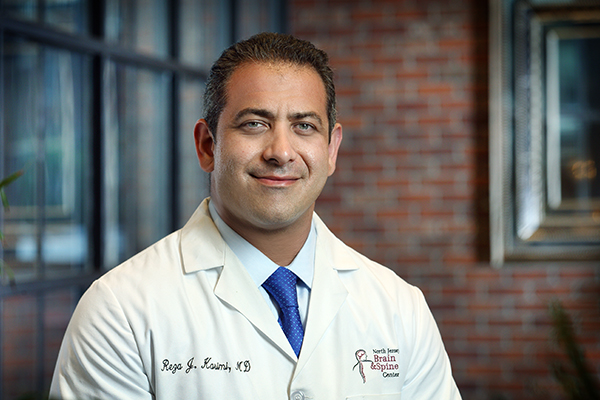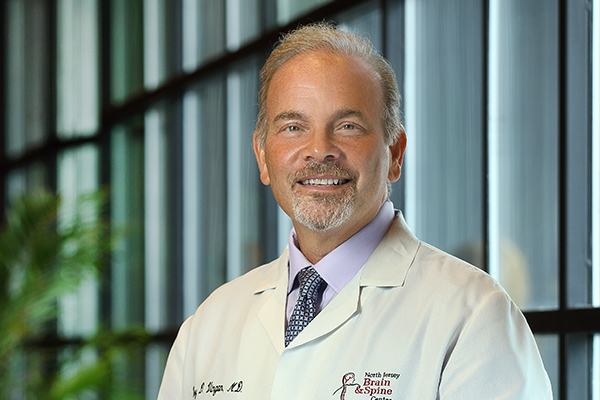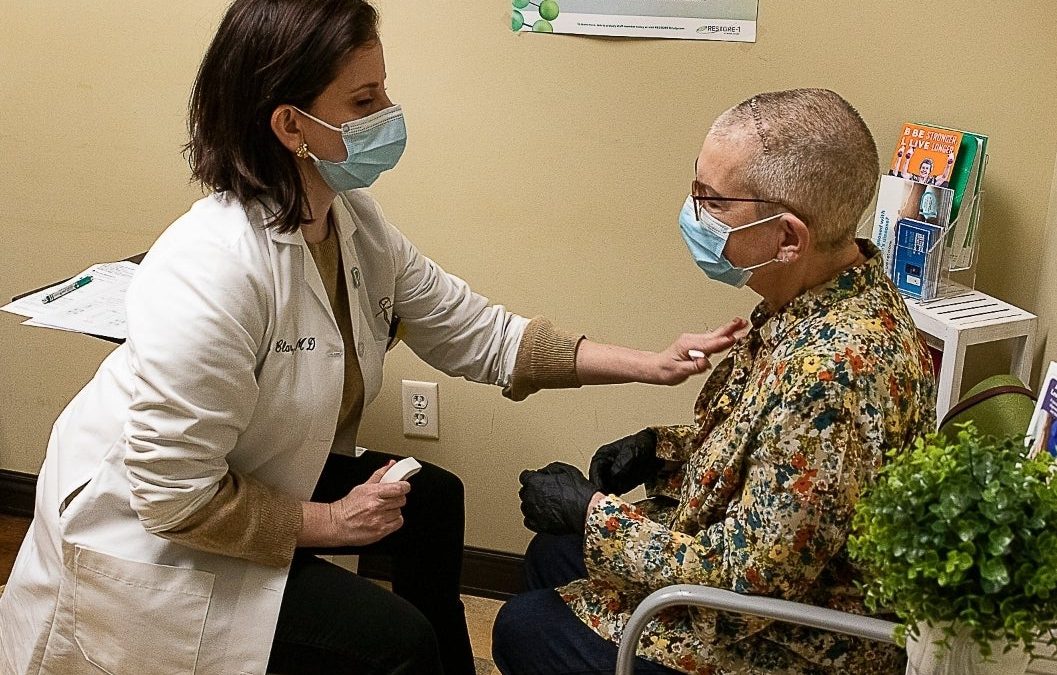- What is Spinal Fusion Surgery?
- When is spinal fusion a necessary treatment?
- Is Spinal Fusion Surgery Serious?
- What Is the Recovery Time after Spinal Fusion Surgery?
- What Is the Success Rate of Spinal Fusion Surgery?
- What Type of Surgeon Is Best for Spinal Fusion?
- What are the benefits of Spinal Fusion Surgery?
- What are common problems after Spinal Fusion Surgery?
What is Spinal Fusion?
Spinal Fusion Surgery: What You Should Know
When you’re dealing with chronic back pain, every movement is compromised. Whether it’s difficulty rising from a seated position, simply standing in place, or walking a few steps, back pain shows no mercy, especially when the pain is linked to instability, degenerative disc disease, or spondylolisthesis. If conservative treatments have failed to produce results, what are your options?
A viable next step is spinal fusion surgery. This procedure works to alleviate chronic back pain and restore stability to the spine, via advanced neurosurgical techniques. It involves joining two or more vertebrae together—thus eliminating the motion between them.
As you consider or prepare for spinal fusion surgery, it’s natural to have questions about the recovery process, the surgery’s impact on your life, and financial considerations. Here, we explore key aspects of spinal fusion surgery so you have a comprehensive understanding of what to expect.
What is Spinal Fusion Surgery?
Spinal fusion surgery is a procedure that stabilizes or secures two or more bones of the spine together. The stabilized bones will then heal or “fuse” together over time. The procedure is often performed for the treatment of mechanical instability of the spine that is causing pain. We perform spinal fusion procedures when we can pinpoint a specific area of the spine that is causing pain that the patient cannot solve through physical therapy, medication, or other nonsurgical options. Spinal fusion surgery is not a “last resort,” but rather an effective option for certain patients in our toolbox as spine experts.
When is spinal fusion a necessary treatment?
Spinal fusion is a treatment option for certain patients with mechanical instability of the spine who are seeking relief from ongoing back pain or neck pain. If you suffer from mechanical instability of the spine and you’re interested in improving your quality of life, exploring spinal fusion is a good next step.
There are a range of spinal injuries and conditions that cause the pain that spinal fusion addresses, including:
- Traumatic spinal injuries
- Degenerative disk disease
- Spondylolisthesis
- Spondylolysis
- Facet joint disease
- Spinal stenosis
- Scoliosis
- Fractured vertebra
- Infection
- Recurrent disc herniations after surgery
- Tumors of the spine
Is Spinal Fusion Surgery Serious?
Spinal fusion is considered a major surgery. It involves significant changes to the spine’s anatomy and requires a substantial recovery period. Like all major surgeries, spinal fusion carries risks such as infection, nerve damage, and the possibility of the vertebrae not fusing properly. However, advancements in surgical techniques have significantly improved outcomes and reduced complications. Minimally invasive techniques, intraoperative navigation, and neuromonitoring have further enhanced surgical precision and safety.
Spinal fusion is a safe and effective procedure. Spinal fusion surgery encompasses a range of procedures that are dependent on each patient’s specific case. There are several nuances to the surgical approach that your doctor will discuss with you, depending on what condition we are treating and what would be the least invasive and most effective method for you. Because spinal fusion is an umbrella term for procedures in any part of the spine, your doctor will walk you through the details that are specific to your case–Lumbar Fusion Surgery is one example of a sub-category.
What Is the Recovery Time after Spinal Fusion Surgery?
Recovery time from spinal fusion surgery varies depending on an individual’s overall health, the complexity of the surgery, and the specific vertebrae fused. Generally, patients can expect to spend a few days in the hospital post-surgery. Full recovery, however, can take anywhere from three to six months, with some patients experiencing complete healing up to a year after surgery. Some patients with physically demanding jobs may require extended recovery or job duty modifications.
During this time, individuals benefit from physical therapy to strengthen the back muscles and ensure a successful fusion of the vertebrae. Customized rehab programs can improve outcomes and reduce re-injury risk. At New Jersey Brain and Spine, we are big advocates for physical therapy and its long-lasting benefits, particularly after a major procedure like spinal fusion surgery.
What Is the Success Rate of Spinal Fusion Surgery?
The success rate of spinal fusion surgery varies, with reports indicating positive outcomes ranging from 70% to 90%. Success is measured by the reduction of pain, improved physical function, and the successful fusion of the vertebrae. Factors that can influence outcomes include the patient’s health, the specific condition being treated, and adherence to post-operative care instructions. Outcomes are often best in cases of spondylolisthesis or mechanical instability
Many patients go on to lead normal, active lives after spinal fusion surgery. While certain high-impact activities and sports may need to be avoided or modified, most individuals can return to their daily routines, including work, with some adjustments. It’s important to note that success in regaining a normal life largely depends on adhering to rehabilitation guidelines and allowing the body ample time to heal. Patients are advised to avoid smoking postoperatively, as nicotine use is a leading cause of failed fusion.
What Type of Surgeon Is Best for Spinal Fusion? | Surgeons in New Jersey
When considering spinal fusion surgery, selecting the right surgeon is a critical step towards ensuring a successful outcome. Spinal fusion is a complex procedure that requires not only technical expertise but also a deep understanding of spinal anatomy and the underlying conditions that necessitate the surgery.
The following provides a detailed view at the qualifications and expertise you should seek in a surgeon, including the type of surgeon you seek out, the expertise they have, and how they approach your specific circumstances. This includes assessing not just board certification, but also fellowship training and surgical volume.
- Specialization and Board Certification: Both neurosurgeons and orthopedic spine surgeons are equally qualified—patients should seek surgeons with a strong track record in spinal fusion.
- Orthopedic surgeons specialize in the entire musculoskeletal system, with some focusing specifically on spinal conditions. A board-certified orthopedic surgeon who has completed additional fellowship training in spine surgery is highly qualified to perform spinal fusion. Their training includes the diagnosis, treatment, and prevention of spinal disorders, injuries, and diseases.
- Neurosurgeons specialize in the nervous system and its surrounding structures, including the brain and spine. Those who focus on the spine are trained to address spinal cord issues, nerve compression, and structural spinal conditions. A board-certified neurosurgeon with a focus on spinal surgery is well-equipped to handle the intricate aspects of spinal fusion, especially when the surgery involves the spinal cord or nerve roots.
- Experience and Track Record: The experience of the surgeon is paramount. Surgeons who perform spinal fusion surgeries regularly are more likely to be adept at handling the various complexities that can arise during and after the procedure. They are also more familiar with the latest surgical techniques and technologies, such as minimally invasive surgery, which can improve recovery times and outcomes.
A surgeon’s track record of successful outcomes is a crucial factor to consider. Success in spinal fusion surgery is measured not just by the surgical procedure itself, but by the patient’s recovery, reduction in pain, and improvement in quality of life. Asking about the surgeon’s success rates, as well as their complication rates, can provide insight into their expertise. Consider asking if your surgeon participates in national surgical registries or outcomes tracking databases. - Consultation and Communication
A thorough consultation with the surgeon can provide valuable insights into their approach to spinal fusion surgery. It’s imperative the surgeon takes the time to explain the procedure, the expected outcomes, and the risks involved. They should also be willing to answer any questions you have, helping you to make an informed decision.
Effective communication with your surgeon and their healthcare team is essential for a successful surgery and recovery. The best surgeons are those who foster an open line of communication, ensuring that you feel supported throughout the process. Postoperative follow-up and access to your care team can significantly improve your satisfaction and outcomes - Seeking Referrals and Second Opinions
Getting referrals from your primary care doctor, as well as recommendations from patients who have undergone spinal fusion surgery, can help you identify highly qualified surgeons.
Seeking a second opinion is a prudent step, especially for a surgery as significant as spinal fusion. It can provide additional perspectives on the necessity of the surgery, the approach, and the surgeon’s qualifications. Second opinions may also help clarify surgical alternatives or eligibility for minimally invasive techniques.
What are the benefits of Spinal Fusion Surgery?
At New Jersey Brain and Spine, we always advise consulting with your insurance provider and healthcare team to understand the costs and coverage options. We also know there is a cost/benefit consideration here. For some, the investment is more than worth it due to the achievable results. Potential improvements in quality of life post-surgery can be substantial.
- Pain Reduction: For many patients, spinal fusion can lead to significant reductions in back pain, which in turn can decrease reliance on pain medications, improve mood, and enhance overall well-being.
- Increased Mobility: By stabilizing the spine, spinal fusion can improve mobility and allow patients to engage in daily activities with less discomfort. This can lead to a more active lifestyle and the ability to participate in hobbies and activities that were previously hindered by back pain.
- Enhanced Physical Function: The surgery can restore spinal stability, which is essential for physical function. Patients may find it easier to stand, walk, and perform tasks that were challenging before surgery.
- Long-Term Savings. Reducing or eliminating chronic back pain can decrease the long-term costs associated with pain management—including medications, physical therapy, and alternative treatments.
- Return to Work. Improving physical function can enable a quicker return to work and potentially increase earning capacity, especially for those whose work was impacted by their condition.
- Mental Health Benefits. Chronic pain is often linked with conditions such as depression and anxiety. Improving physical health can have positive effects on mental health, reducing medical costs, and improving life satisfaction.
What are common problems after Spinal Fusion Surgery?
Typically, patients have a straightforward recovery process that culminates in the return to a normal schedule – or in many cases, a “new normal” that’s much better than what they experienced for years or decades prior. Patients are often able to be out of bed the same day or following day. A brace may be prescribed as well as physical therapy. However, it does often take several months after spinal fusion surgery to fully heal and complete the necessary physical therapy routines. The common problems after spinal fusion have more to do with commitment to rehab and recovery recommendations than anything else.
Infection is a possible complication after any surgery, and is therefore one of the problems that can arise after spinal fusion. Some patients also report acute pain at the bone graft site. Your doctor will be able to discuss why that pain might be occurring and what next steps would be most appropriate.
Making an Informed Decision: You Don’t Have to Go It Alone
Spinal fusion surgery is a significant procedure with the potential to greatly improve the quality of life for individuals suffering from chronic back pain. Understanding the recovery process, the lifestyle implications, and the financial aspects of the surgery can help patients and their families make informed decisions. As with any major medical decision, it’s essential to consult with experienced medical professionals to ensure the best outcomes.








